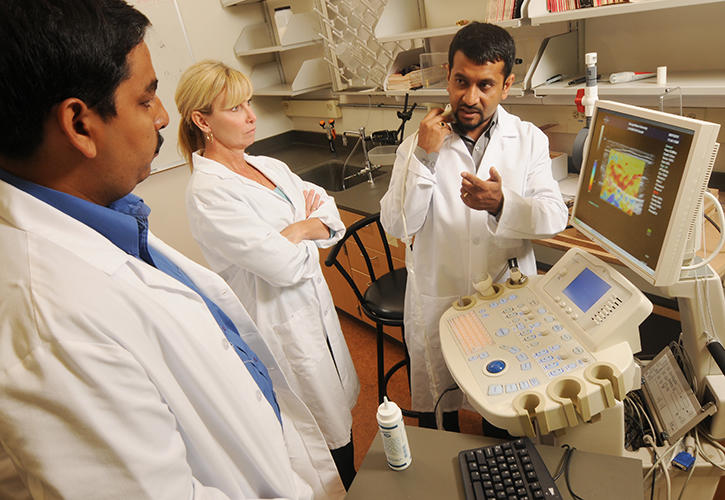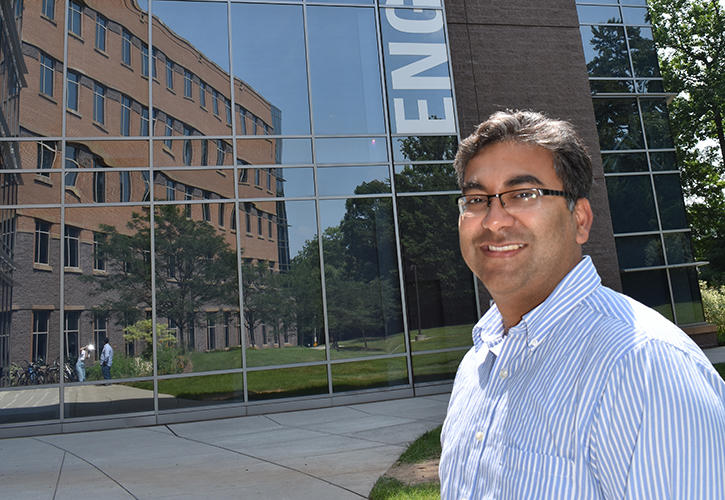Biomedical imaging is one of the most important tools for investigating anatomy, physiology, and function at multiple levels from cellular to the whole body.
Faculty:
Siddhartha Sikdar, Professor
Parag Chitnis, Associate Professor
We combine multiscale imaging, including new ultrasound, photoacoustic, and magnetic resonance imaging techniques with novel devices for modulating function, including transcranial magnetic stimulation, ultrasound-induced bioeffects, and assistive technologies for rehabilitation.
Our areas of expertise include:
Ultrasound imaging and devices
This research investigates brain-body interactions through imaging. In particular, we are studying the interactions between the central and peripheral nervous system and the musculoskeletal system in a number of clinical conditions of major public health significance, such as chronic pain, stroke, spinal cord injury, and amputation.
Ongoing research includes the development and evaluation of novel bionic technologies, such as upper extremity prostheses and hybrid exoskeletons, using wearable imaging sensors for sensing the human user’s volitional intent. This approach can significantly improve the functionality of advanced prostheses and exoskeletons. Principal investigator: Siddhartha Sikdar.

Siddhartha Sikdar, professor of bioengineering, is the leader of the research on ultrasound imaging and devices. He is currently using ultrasound technology to give people better control of prosthetics for their arms, hands, and legs.
Photoacoustic imaging and microscopy
Photoacoustic imaging is a hybrid imaging technique that combines the spectroscopic specificity of optics with tissue penetration of ultrasound. Our group focuses on novel implementations of photoacoustics for (1) non-contact microscopy of retinal vasculature, and (2) mapping cerebrovascular function and neuro-electrical activity in the brain with the long-term goal of gaining insights into brain function and neurodegenerative diseases. Principal investigator: Parag Chitnis. Watch Dr. Chitnis' research on YouTube.

Parag Chitnis, assistant professor of bioengineering, studies human function and pathophysiology using ultrasound and optics in novel ways.
